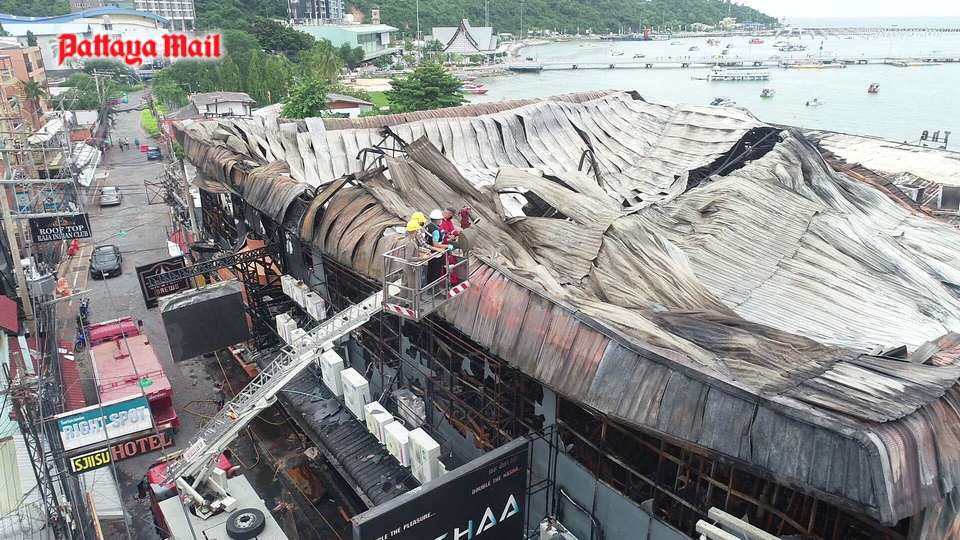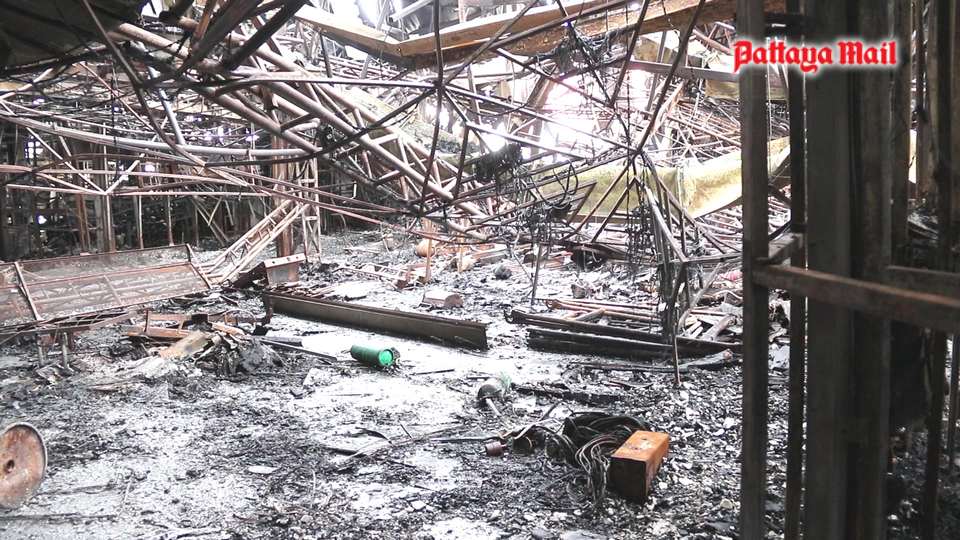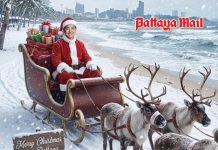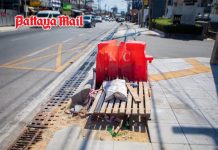
Initial feedback is warning against the widely-held assumption on social media that the padlocked Nashaa club fire was likely started deliberately. The nitery, strongly favoured by Indian tourists before the closure of all Pattaya entertainment venues last April because of coronavirus fears, was utterly destroyed during curfew hours on September 12. The fire was the most destructive ever experienced in Walking Street history, although prompt action by Pattaya firemen avoided extensive damage beyond the premises.
The club is believed to be owned since 2016 by the Bangkok-based Castle Group International. The club management posted an internet acknowledgement saying the fire was “agonizing” and asking people not to support or spread rumors on social media. The message also expressed the hope to “be open again soon.” This latter aspiration seems contrary to City Hall’s warning earlier this year that Walking Street premises built on the waterfront side would not be able to obtain licences for 2022 because they are illegal structures. This claim has been a hot potato of dispute for over 30 years.

It is not known if the write-off premises were insured. David Kees, who rented a Walking Street bar prior to the virus pandemic, said, “Many premises were not properly covered even in my day as some insurance companies were reluctant to get involved because of doubts about the legal status or lack of health and safety measures.” He added that the larger clubs typically had insurance needed for registration with the local authority, but the leaseholders did not renew once the pandemic caused the closures. “I never knew anyone who actually received cash following any kind of claim,” he stressed.
Charles Madren, who is a retired Legal and General claims officer, said that the state of the gas canisters stored on an upper floor of the building would receive close scrutiny from inspectors. He speculated that they were used in the food cooking process as the ground floor had apparently been a restaurant prior to last April. He said, “Compressed cylinders store gasses that can be extremely flammable and any sudden release can create a missile-like projectile capable of penetrating even a brick wall.” The night security guard told police that he heard consecutive loud explosions. One suggestion, currently being followed up by investigators, is that faulty or damaged wiring could have created an ignition source such as a spark or even a small fire.

Other Walking Street fires have been smaller affairs such as the sudden explosion of a transformer in 2018 and the pandemonium in 2020 after a fire in a small hotel. The resort’s most tragic gas disaster occurred in 1997 at the luxury Royal Jomtien Resort Hotel after a faulty liquid propane cylinder in a ground floor buffet exploded. 91 people died as a result. Typically, official reports into disasters of this sort take many months or even years to complete. That’s long after the initial public interest has waned or disappeared. There were no human casualties in the Nashaa conflagration.
 |
 |
 |





